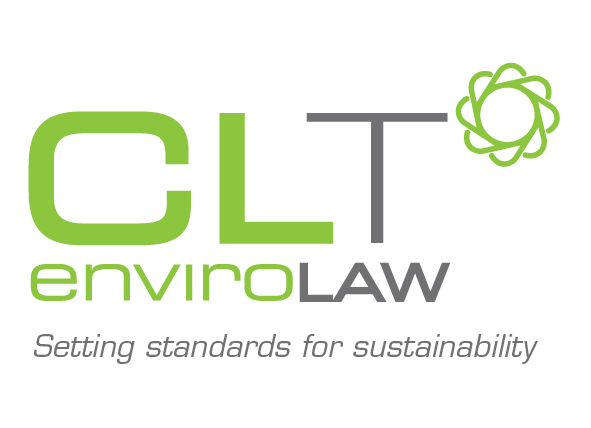Sustainability: it’s just good OSH
Larissa Prevett LL.B, LL.M
Jr. Associate at CLT envirolaw
http://clt-envirolaw.com/
It’s always after Christmas that I start to properly reflect on everything passed — the exchanging of gifts, the mountains of wrapping paper, the unnecessary amount of food consumed. Don’t get me wrong, I love to enjoy the good things in life, and sharing moments such as Christmas time with family are priceless.
Nonetheless, I can’t help but think about where everything comes from — the cotton in my new shirt that I desperately hinted at wanting, for example. Who planted and harvested it? Who produced the textile out of the cotton crop and then who turned that into a shirt? Do all of these people get to spend their significant holidays with their family?
More importantly: under what conditions do the people that make the things I use in my day to day life work? Do they get paid fairly? Do they have access to clean toilets and drinking water? Are they exposed to any dangerous chemicals or is the factory building in which they spend long working hours even safe? Do their employers care?
Last time I argued that OSH as part of good supply chain management fell within the remits of Business and Human Rights. That is, “OSH elements are inseparable parts of the sustainability indicators for companies”.[1] For this entry and the next I will be looking at why OSH should be embedded in strategy by businesses, not just internally but also externally. I will follow the distinction made by EU OSHA between:
· suppliers, where there is a flow of materials and information; and
· sub-contractors, where there is a flow of specialised labour often working onsite as well as information.[2]
So why should OSH professionals push to extend internal OSH policy, organisation and culture beyond the company boundary? Particularly in the case of suppliers who fulfil their work far removed from company sites there may seem to be little real incentive to do so.
However, this attitude shows little foresight and understanding of the changing landscape. Stakeholders such as governments, customers, investors and NGOs, are increasingly placing brand-owning companies in particular under scrutiny for the bad OSH practices they may be indirectly responsible for. Consequently, reputation and regulation have become major drivers for change in this area. To name a few examples, large retailers such as H&M were held responsible for poor working conditions at their indirect suppliers’ factories in India, and Nokia attracted criticism for similar reasons in its Asian factories.
Though significant, minimising reputational and regulatory risks are not the only arguments for sustainable supply chain management. Often cited drivers for focal companies to develop sustainable supply chains as part of their CSR programmes are as follows:
legal requirements;
customers’ demands;
response to stakeholders and pressure groups;
competitive advantage; and
reputational damage
These pressures and incentives are hard to consider separately. For example, existing and/or potential customers/investors may require social and/or environmental management systems to be in place, many of which address supply chain issues. OHSAS 18000, an international occupational health and safety management system specification,[3] is one such standard which stakeholders may demand and which may also help:
· generate a competitive advantage for organisations; and
· enhance reputation
No company can effectively argue that corporate reputation, trust, brand image, and credibility are not essential for their long term profitability.
Regulation relating to OSH and the supply chain is a growing area, both at international and national levels. EU OSHA states that this would include statutory procurement requirements which already exist in some European countries, such as Belgium, as well as provisions in place for the clothing industry in Australia and EU’s REACH regulatory regime. Where hard legislation or public procurement requirements are non-existent — OSH can become a differentiator for organisation’s competing for tenders.
Internationally, the updated OECD Guidelines for Multinationals may be a precursor for future legal developments, as 42 governments commit to enforcing their application to companies’ global operations. The code for responsible business recommends enterprises ‘take adequate steps to ensure occupational health and safety in their operations’.[4]
Some of the most successful attempts to influence businesses to require improved labour conditions in their supply chains have been multi-stakeholder initiatives or collaborations. One practical example of a fruitful partnership was that between focal company Corus (now Tata Steel) and the Netherlands Organisation for Applied Scientific Research to develop an effective supply chain communication plan under the REACH regulation.[5]
To conclude, I would add to these arguments as follows: there are reasons why OSH is justified internally — and these reasons apply equally to the supply chain. High profile, fatal factory collapses aside, “in developing countries, violent physical accidents and pandemics are still great risks, because of a lack of a preventive health and safety culture, poor management systems, poor supervision or lack of enforcement by the governments.”[6] Research by Impactt in places such as India and Bangladesh,[7] for example, shows that improved worker wellbeing, as well as training in health and safety, results in:
· a more efficient workforce; and
· reduced absenteeism
Contrastingly, “in developed countries, ergonomics, mental illnesses, musculo-skelettic trouble are more frequent.”[8] Whether sourcing goods locally or from abroad, no focal company wants to tamper with security of supply and productivity, so why not use experience with OSH as an opportunity to develop more communicative, stronger, longer term, and, therefore, in effect, more strategic supplier relations?
I will end the discussion here to allow for contemplation. Under consideration next time: the business case for promoting OSH in contracting chains.

[5] See case study in EU-OSHA 2012, pp. 62-63
What makes us susceptible to burnout?
In this episode of the Safety & Health Podcast, ‘Burnout, stress and being human’, Heather Beach is joined by Stacy Thomson to discuss burnout, perfectionism and how to deal with burnout as an individual, as management and as an organisation.
We provide an insight on how to tackle burnout and why mental health is such a taboo subject, particularly in the workplace.


